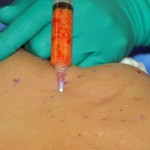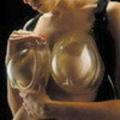Breast augmentation historically and to the present day is an implant-driven operation. What is put in accounts for the way it appears on the outside. Despite its popularity, breast implants due have their problems including a limited lifespan. Contrary to what many patients believe, they are not lifelong devices and they will eventually fail and need to be replaced.
The lack of permanency of breast implants, amongst other issues, has led to the pursuit of a more natural solution. Since breasts are composed of a percentage of fat tissue, it is logical to attempt breast augmentation with one’s own fat. Fat grafting has come to be of real value in facial rejuvenation as a filler and volume restoration method. Putting fat into the breast, however, is fraught with many more issues than in the face. It requires a higher volume of injectate so the risk of fat absorption and cyst formation with necrosis makes it potentially unreliable. History has borne that out in the past.
Breast augmentation with fat injections, while being practiced by a few surgeons presently, is still in its infancy. The biggest problem is to be able to increase the size of the breast appreciably with consistent and reliable fat graft survival. Small breast augmentations with fat is being done but these results would not be acceptable to most women seeking breast augmentation in the U.S. In addition it may require multiple injections sessions which makes the cost greater than the use of a traditional implant.


This study is significant as it is the first to report large volume fat injection survival in the breast. While it is cumbersome for the patient to undergo this expansion protocol, both before and after surgery, the results may be worth it. While this is not for every patient (probably less than 1% of breast augmentations currently), it lays the foundation for further refinement that one day may make it an option for a greater number of patients.
Dr. Barry Eppley
Indianapolis, Indiana


